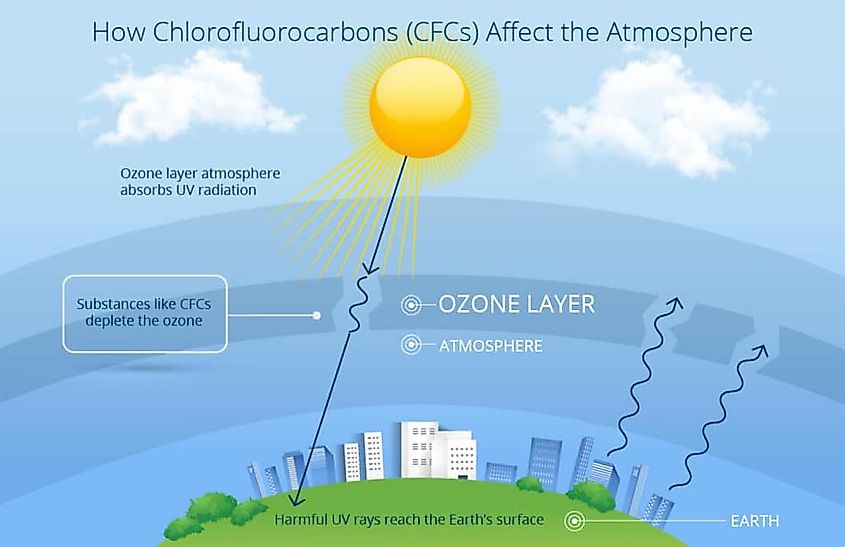When we talk about the ozone layer, we refer to a layer of gas high up in the Earth's atmosphere that protects us from the sun's harmful ultraviolet (UV) radiation. Ozone depletion is a serious environmental issue that is caused by the release of certain chemicals into the air. Aerosols are one of the major culprits behind the depletion of the ozone layer.
What are Aerosols?
Aerosols are tiny particles or droplets that float in the air. They can be naturally occurring or human-made. Natural aerosols include dust, pollen, and sea salt. Human-made aerosols are created by various industrial activities, such as burning fossil fuels, manufacturing processes, and transportation.
How do Aerosols Deplete Ozone?
Aerosols contain certain chemicals that can react with the ozone layer, causing it to break down. The most common chemicals found in aerosols that deplete ozone are chlorofluorocarbons (CFCs) and hydrochlorofluorocarbons (HCFCs). These chemicals are used in various products, such as refrigerants, air conditioners, and aerosol sprays.

When CFCs and HCFCs are released into the atmosphere, they rise up to the ozone layer. There, they react with the ozone molecules and break them apart. This process creates a hole in the ozone layer, which allows more UV radiation to reach the Earth's surface.
What are the Effects of Ozone Depletion?
Ozone depletion has serious consequences for human health and the environment. Increased exposure to UV radiation can lead to skin cancer, cataracts, and immune system suppression. It can also harm crops and marine life, disrupt ecosystems, and contribute to climate change.
Which Aerosols are the Biggest Contributors to Ozone Depletion?
The biggest contributors to ozone depletion are aerosols that contain CFCs and HCFCs. These chemicals are no longer used in most developed countries due to international agreements such as the Montreal Protocol, but they are still used in some developing countries.

Other aerosols that can contribute to ozone depletion include methyl bromide, halons, and carbon tetrachloride. These chemicals are also controlled by international agreements, but they are still used in some industrial applications.
What Can We Do to Reduce Ozone Depletion?
The best way to reduce ozone depletion is to reduce our use of products that contain CFCs, HCFCs, and other ozone-depleting chemicals. This includes avoiding aerosol sprays, using energy-efficient appliances, and recycling old refrigerators and air conditioners. We can also support international agreements that regulate the use of ozone-depleting chemicals and encourage developing countries to phase out their use.

Conclusion
Aerosols are a major contributor to the depletion of the ozone layer. Chemicals found in aerosols such as CFCs and HCFCs react with the ozone layer, causing it to break down and create a hole. This hole allows more UV radiation to reach the Earth's surface, which has serious consequences for human health and the environment. We can reduce ozone depletion by reducing our use of ozone-depleting chemicals and supporting international agreements that regulate their use.